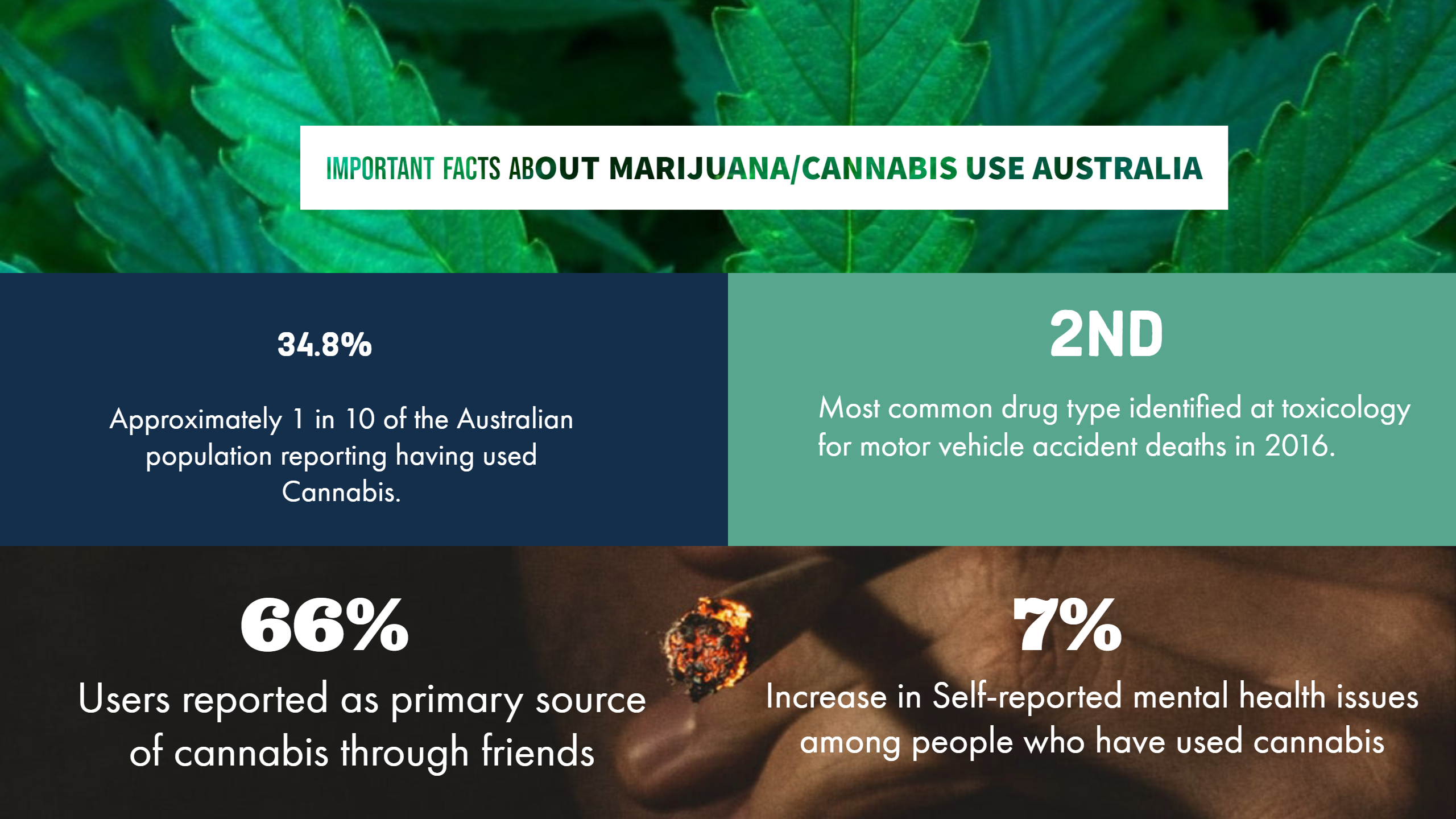Cannabis, also known as marijuana, is the most commonly used illegal drug in Australia. It is derived from the Cannabis sativa plant and is used for recreational, medicinal, and industrial purposes. In this article, we will explore the different forms of cannabis problem, its effects, and the prevalence of its use in Australia, as well as its connection to mental health emergencies and the importance of mental health first aid.
Cannabis Problem in Australia: An Overview
Cannabis has a long history in Australia, with the first record of hemp seeds being brought to the country by the First Fleet at the request of Sir Joseph Banks. In recent years, Australia has seen a shift in attitudes towards the legalization of cannabis. According to the National Drug Strategy Household Survey (NDSHS) in 2019, more Australians now support the legalization of cannabis than remain opposed.
Australia has one of the highest cannabis prevalence rates in the world, with approximately 1 in 10 Australians reporting having used cannabis. In 2016, cannabis was legalized for medicinal and scientific purposes at the federal level. However, recreational use of cannabis remains illegal in most states and territories.
Different Forms of Cannabis
Cannabis is produced in various forms, including:
- Marijuana: The most common and least concentrated form, made from dried plant leaves and flowers. It is usually smoked in a water pipe (bong), pipe, or hand-rolled cigarette (joint).
- Hashish: Small blocks of dried cannabis resin, typically mixed with tobacco and smoked or added to foods and baked goods.
- Hash oil: A thick, oily liquid extracted from hashish, usually spread on the tip or paper of cigarettes and then smoked. Hash oil is more potent than other forms of cannabis.
- Concentrates: Cannabis extracts, such as dabs, wax, or shatter, often vaporized in small quantities due to their high THC content.
In addition to these forms, synthetic cannabis products have emerged in recent years, claiming to have similar effects to cannabis but potentially being more harmful.
Effects of Cannabis Use
Using cannabis can have a range of effects on individuals, which can vary depending on factors such as the person’s size, weight, and health, as well as the amount and strength of the drug consumed. Some common effects of cannabis use include:
- Relaxation and well-being
- Loss of inhibition
- Reduced concentration and memory
- Distorted perceptions of time, space, and distance
- Increased heart rate
- Drowsiness
- Increased appetite
- Anxiety and paranoia
Larger doses or stronger forms of cannabis can intensify these effects and cause additional symptoms such as confusion, restlessness, hallucinations, detachment from reality, and nausea.
Cannabis Problem and Mental Health
Cannabis use can have significant impacts on mental health, particularly for those who have a personal or family history of mental health issues. It has been linked to drug-induced psychosis, the triggering of the first episode of a psychotic illness, and the worsening of pre-existing psychotic illnesses.
Cannabis and Psychosis
Research suggests that cannabis use can make a person’s existing psychotic symptoms worse and may even bring on psychotic symptoms in people who are predisposed to psychosis. Cannabis use can cause a condition known as drug-induced psychosis, characterized by symptoms such as disorientation, memory problems, and hallucinations.
Cannabis and First Episode of Psychosis
If someone has a predisposition to a psychotic illness, such as schizophrenia, using cannabis may trigger the first episode in what can be a lifelong, disabling condition. There is increasing evidence that regular cannabis use precedes and causes higher rates of psychotic illness.
Worsening of Psychotic Symptoms Through Cannabis Use
Cannabis use generally makes psychotic symptoms worse and lowers the person’s chances of recovery from a psychotic episode. People with a psychotic illness who use cannabis experience more delusions, hallucinations, and other symptoms, and have a higher rate of hospitalization for psychosis. Treatment is generally less effective for these individuals.
Risks from Long-Term Cannabis Use
Long-term cannabis use can lead to a variety of physical and mental health problems, including:
- Risk of asthma, emphysema, shortness of breath, chest infections, and cancers of the throat, mouth, and lungs
- Poor concentration, memory loss, and learning difficulties
- Dependence on cannabis
- Depression of the immune system, increasing the risk of infections
Cannabis smoke has a higher concentration of certain cancer-causing agents than tobacco smoke, and evidence suggests that cannabis may cause cancers of the lung and the aerodigestive tract.
Young People and Cannabis Problem
Young people who start using cannabis earlier in life and use it heavily are more likely to experience mental health problems, as well as general life problems such as conflict at home, school or work, financial problems, and memory difficulties.
Cannabis Tolerance and Dependence
Regular cannabis users can develop a tolerance to the drug, requiring increasingly larger amounts to achieve the desired effects. Some individuals can become psychologically or physically dependent on cannabis, experiencing withdrawal symptoms such as cravings, sleep problems, mood swings, depression, anxiety, restlessness, reduced appetite, and nausea when they try to quit.
Preventing the Negative Health Effects of Cannabis
The best way to avoid the harmful effects of cannabis is not to use it, especially for those who have experienced a psychotic episode in the past or have a family history of psychosis.
Mental Health Emergencies and Mental Health First Aid
Given the potential for cannabis use to trigger mental health emergencies, such as drug-induced psychosis or worsening of pre-existing psychotic symptoms, it is essential for individuals and communities to be equipped with mental health first aid skills. Mental health first aid involves recognizing the signs and symptoms of a mental health crisis, providing initial support and assistance, and guiding the person towards appropriate professional help.
In the context of cannabis use, mental health first aid may involve:
- Recognizing signs of drug-induced psychosis or worsening of psychotic symptoms
- Providing a safe and supportive environment for the individual
- Encouraging the person to seek professional help
- Offering practical assistance, such as helping the person make an appointment with a mental health professional or accompanying them to the appointment
By being prepared to respond to mental health emergencies related to cannabis use, individuals and communities can help to minimize the potential harm and support those affected by the drug.
Conclusion
Cannabis use in Australia remains a significant issue, with potential impacts on both physical and mental health. As attitudes towards cannabis legalization shift and the drug becomes more widely available, it is crucial for individuals, communities, and policymakers to be aware of the potential risks associated with cannabis use and to promote mental health first aid strategies to minimize harm and support those affected by the drug.
By understanding the various forms of cannabis, their effects, and their connection to mental health emergencies, individuals can make informed decisions about their own cannabis use and be better prepared to offer support to friends, family members, or community members experiencing mental health crises related to cannabis use.
Access Mental Health Awareness Books from Amazon: Mental Health Books












